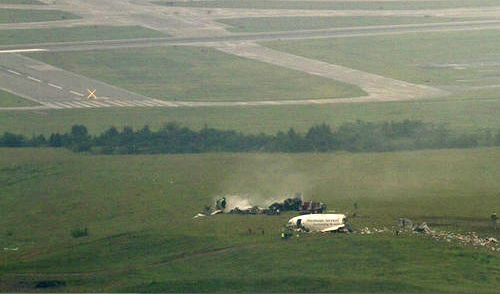UPS Flight 1354 Birmingham, Alabama
UPS Airlines Flight 1354
On August 14, 2013 UPS Airlines Flight 1354 departed from Louisville International Airport and was scheduled to arrive just before dawn at Birmingham-Shuttlesworth International Airport. A typical cargo flight became a fiery crash, clipping trees and a utility line before impacting the terrain just North of Birmingham’s runway 18.
Crew
The only two people aboard the Airbus A300F4-622R were Captain Cerea Beal from Matthews, North Carolina and the First Officer Shanda Fanning from Lynchburg, Tennessee. They were both pronounced dead at the scene.
Flight Details
Runway 18 was the shorter of two landing strips at the Birmingham airport. The longer runway was unavailable at the time of the accident due to maintenance being performed on its lights. Another possible cause for issue with runway 18 is that it lacks an instrument-landing system or an ILS, which allows an aircraft a glide slope to help guide them to the runway and improve the accuracy of an appropriate descent.
A flight safety spokesman told Reuters that landing at Birmingham-Shuttlesworth Airport can be tricky “because it is nestled among hills and that is especially true of Runway 18.” Kevin Hiatt, president and CEO of the Flight Safety Foundation told Reuters Birmingham-based journalist Verna Gates that a “full instrument” landing was not highly advisable at Birmingham-Shuttlesworth Airport. The former Delta pilot Hiatt emphasized:
“It is not a full instrument landing. You have to visually fly into that runway.”
According to investigator Robert Sumwalt, an NTSB board member, the autopilot was engaged until the last second of recorded data. Captain Beal was the flying pilot with the autopilot engaged at the time of the accident.
Equipment
The Airbus A300-600F was built in 2003 and was received by UPS as a new aircraft in 2004. The plane was registered as N155UP and powered by Pratt & Whitney PW4000 engines with around 11,000 flight hours in 6,800 takeoff and landing sets.
Investigation
The National Transportation Safety Board (NTSB) began an investigation sending a “go team” comprised of 26 members to collect evidence. Once the cockpit voice recorder and the flight data recorder were recovered the NTSB was able to determine that the crew had received two GPWS alerts announcing, “sink rate, sink rate” warning that they were descending too quickly. The plane broke into two pieces upon impact. The nose stopped approximately 200 yards from the initial crash site, and the remainder of the aircraft ended up 80 yards further down about .6 of a mile from the runway edge where it caught fire.
The NTSB investigation is expected to take months to complete with no apparent mechanical abnormalities found to date.






